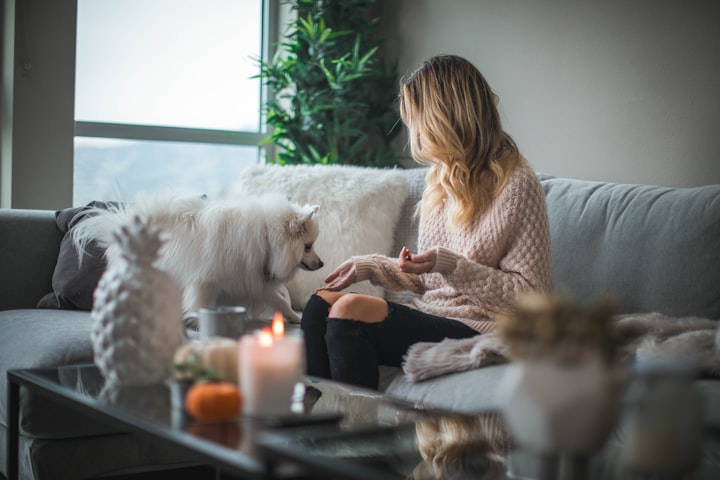
Raising a shy or anxious dog can make it difficult to go to new places or to try new things together. But no worry. Building trust in dogs takes some work, but it can make new experiences easier.
1. Exposure management
This tip sounds fancy, but it isn't. You are basically finding ways to rewire your dog's brain to connect something he was afraid of to something he likes. Let's say your dog is afraid of skateboards. Try putting a skateboard on the floor with dog treats strewn on it.
"The dog will look and realize, 'Oh wait, that could be a moving tray with goodies in it,'" says Melis. "
Once your dog is comfortable with the stationary skateboard, try moving him an inch using the treats above. Once the dog is not afraid of the skateboard moving a little, start moving it more so that it mimics what it might find in real life: a moving skateboard with someone on it.
This technique reprograms a dog's response through a combination of exposure management (so the dog doesn't keep reacting to the same thing) and then controlled reintroduction of the stimulus (which scares the dog) and associates it with positive experiences, like eating, Melis says. For this technique to be effective, it must be of high quality (think small pieces of cheese or a cooked hot dog).
2. Find an environment in which the dog will be successful
Sitting in your house and thinking about what could happen is not good for your brain, and neither is it good for your dog. If you can find a way to get them into new surroundings that make them feel more excited or happier, you will find them.
"Go for long walks that will leave your dog spending more time in really great surroundings with all kinds of smells and sights," says Millis. The dog will think, “I'm so much more busy investigating this wonderful hike than worrying about something getting stuck at night. "
This can help dogs learn to spend less time on fear and more time on curiosity and joy. However, Millis says this approach may not work for every dog. Some dogs may not be comfortable in an environment like the wild. So try to find a place that your dog will feel better about.
“In general, you don't want animals to spend a lot of time practicing problematic behaviors when you can avoid them,” he says. "So we're trying to reprogram: it's not that big, it's not scary, it's not tight, and it’s not that loud."
3. Get some agility training?
Agility training typically teaches your dog specific tasks (such as jumping over a pole or running through a plastic pipe) and then doing those tasks in a specific order. Your dog may learn new skills, but this is really a confidence exercise.
"You start doing these things in nice and appropriate ways so that the dog learns to take cues from his human and to trust him more," says Melis. The dog learns, “I just have to listen to my character and do what they tell me, and that's cool. "
By learning how to successfully overcome new obstacles, your dog will begin to believe in himself. Mellis says that when you help your dog expand other areas of life, he begins to realize he can handle things and overcome the problems he previously thought were great obstacles.
It's also beneficial because it helps build trust between you and your dog, and gaining your dog's trust can help make him feel more secure around him. Once you've developed a background in obedience training, even if he's a little scared or fearful, it will be easier for you to lead your dog, says Melis, and something that once scared them won't work anymore.
4. Enter new situations and people slowly
"As your dog is getting used to things, always take the time to introduce something new, especially new environments, people, and different dogs," says Stelow.
She suggests giving your dog rewards as he explores new environments or meets new people to teach him that new experiences and people can have a positive impact. Also, when your dog first meets people, remind people to move forward slowly and let your dog set the pace for their interaction.





Comments
There are no comments for this story
Be the first to respond and start the conversation.